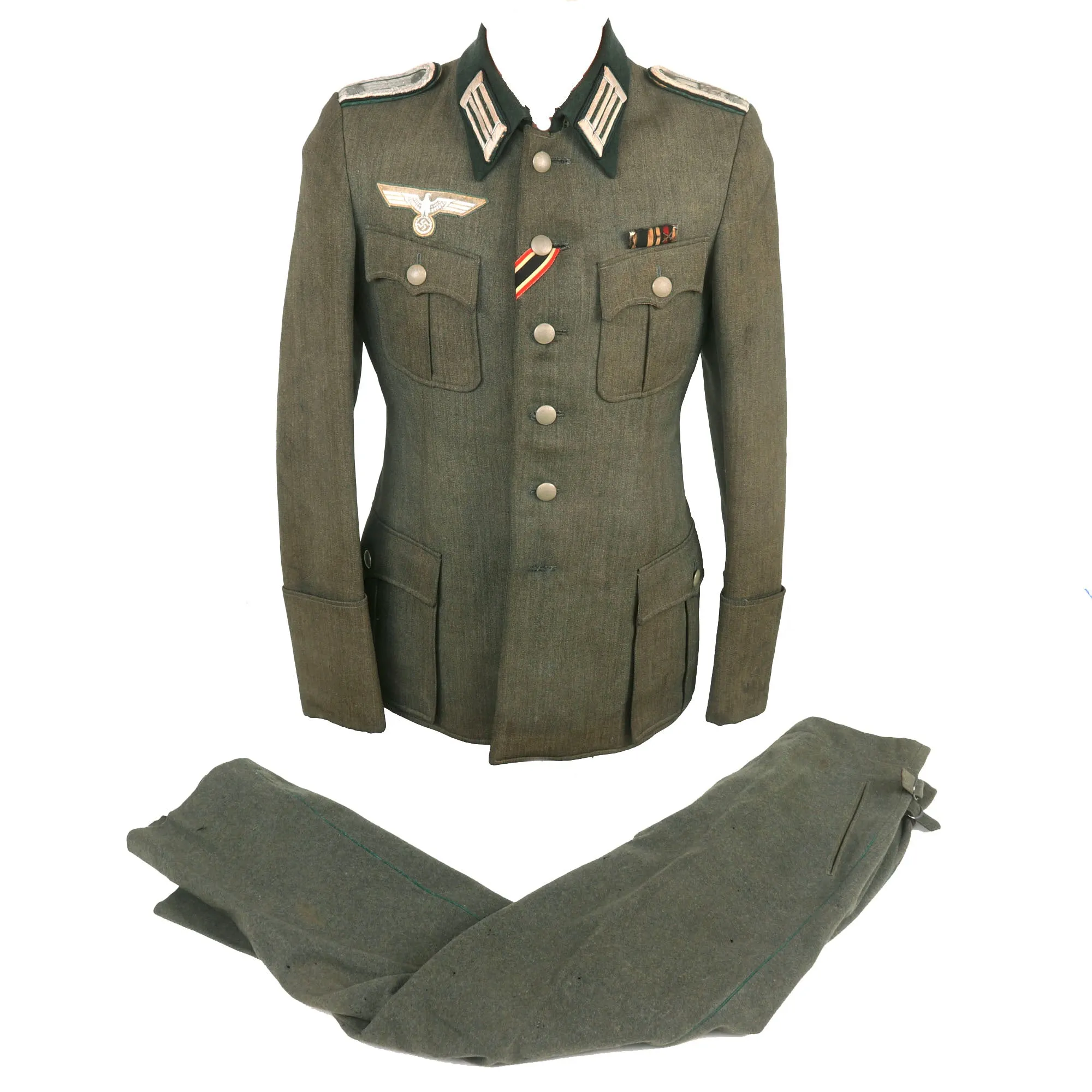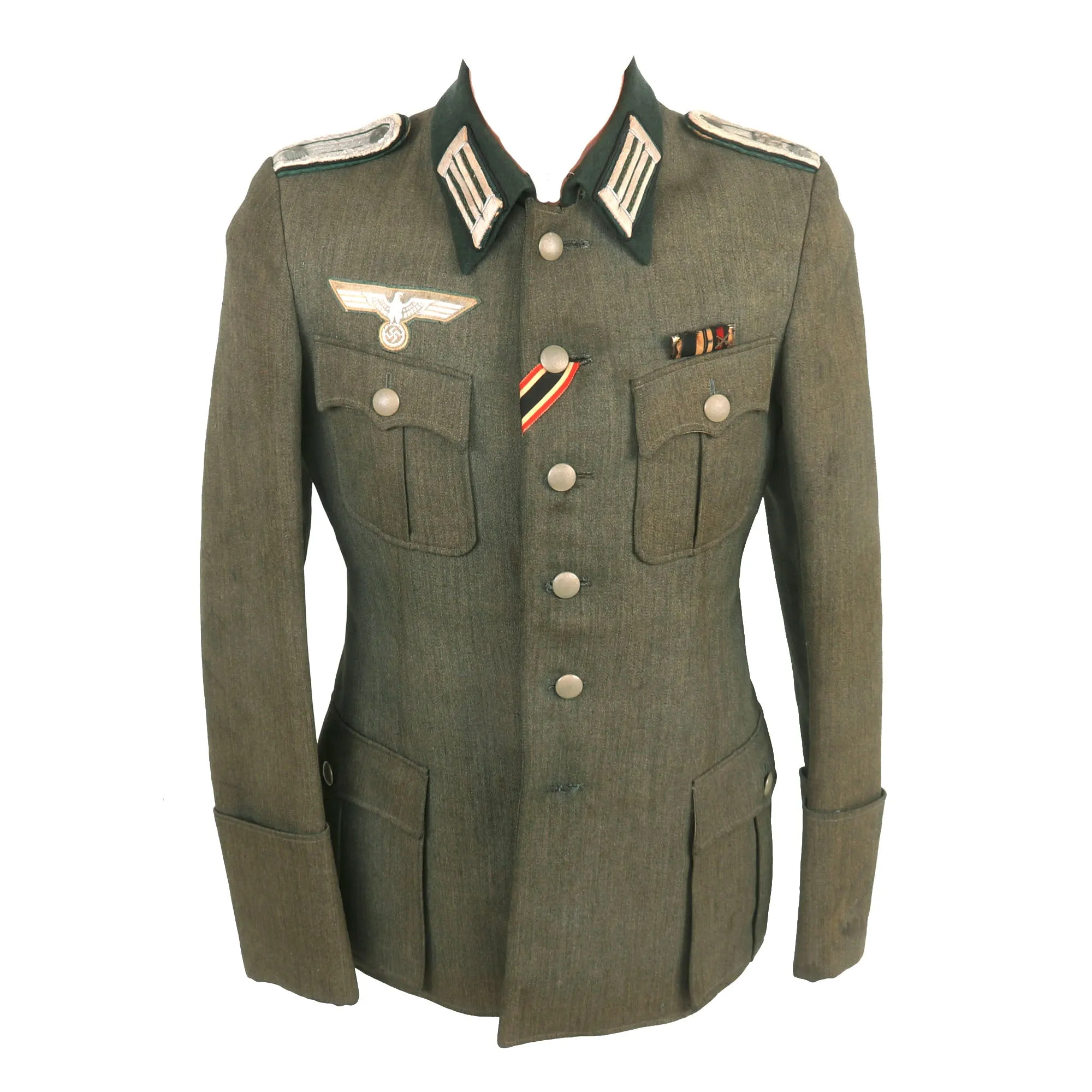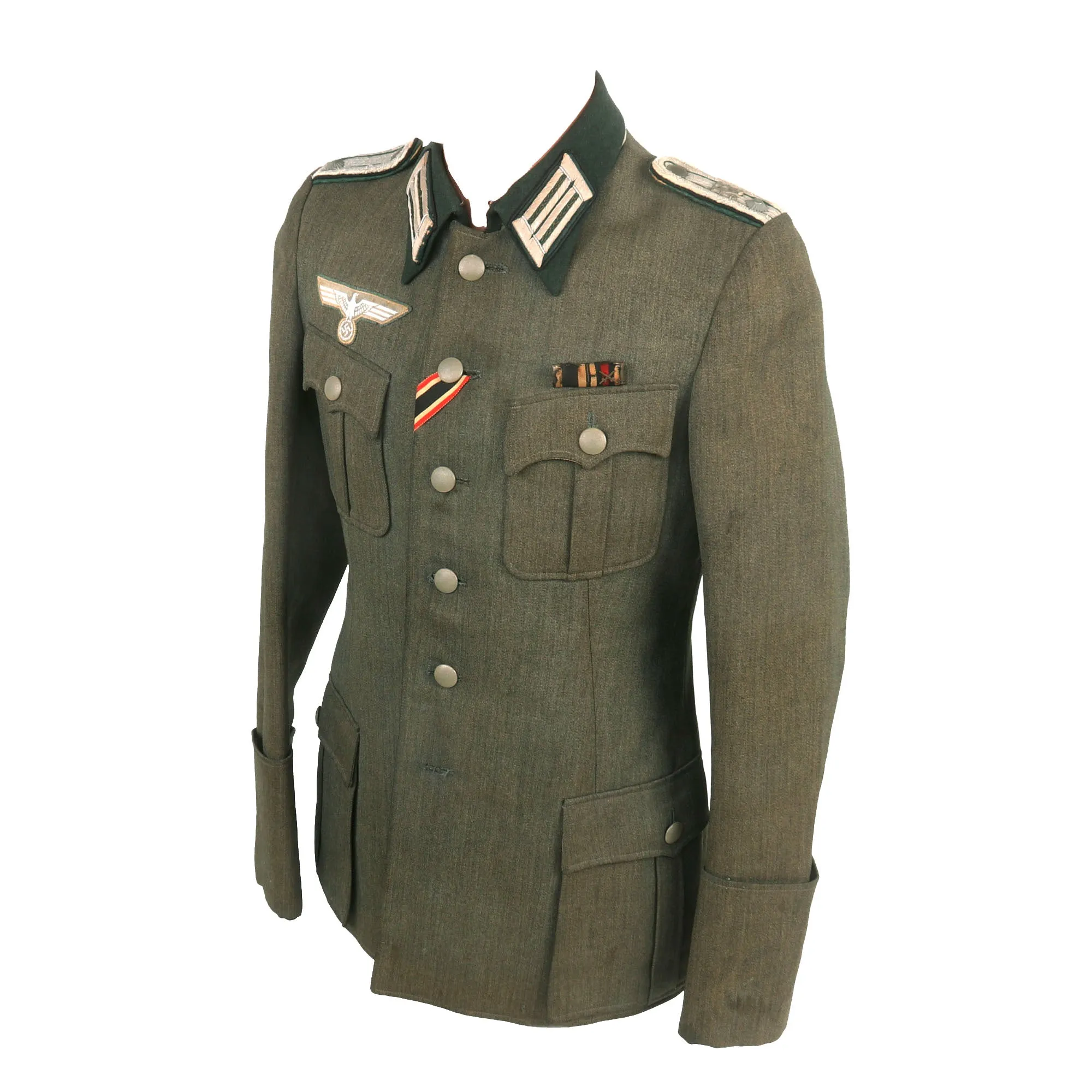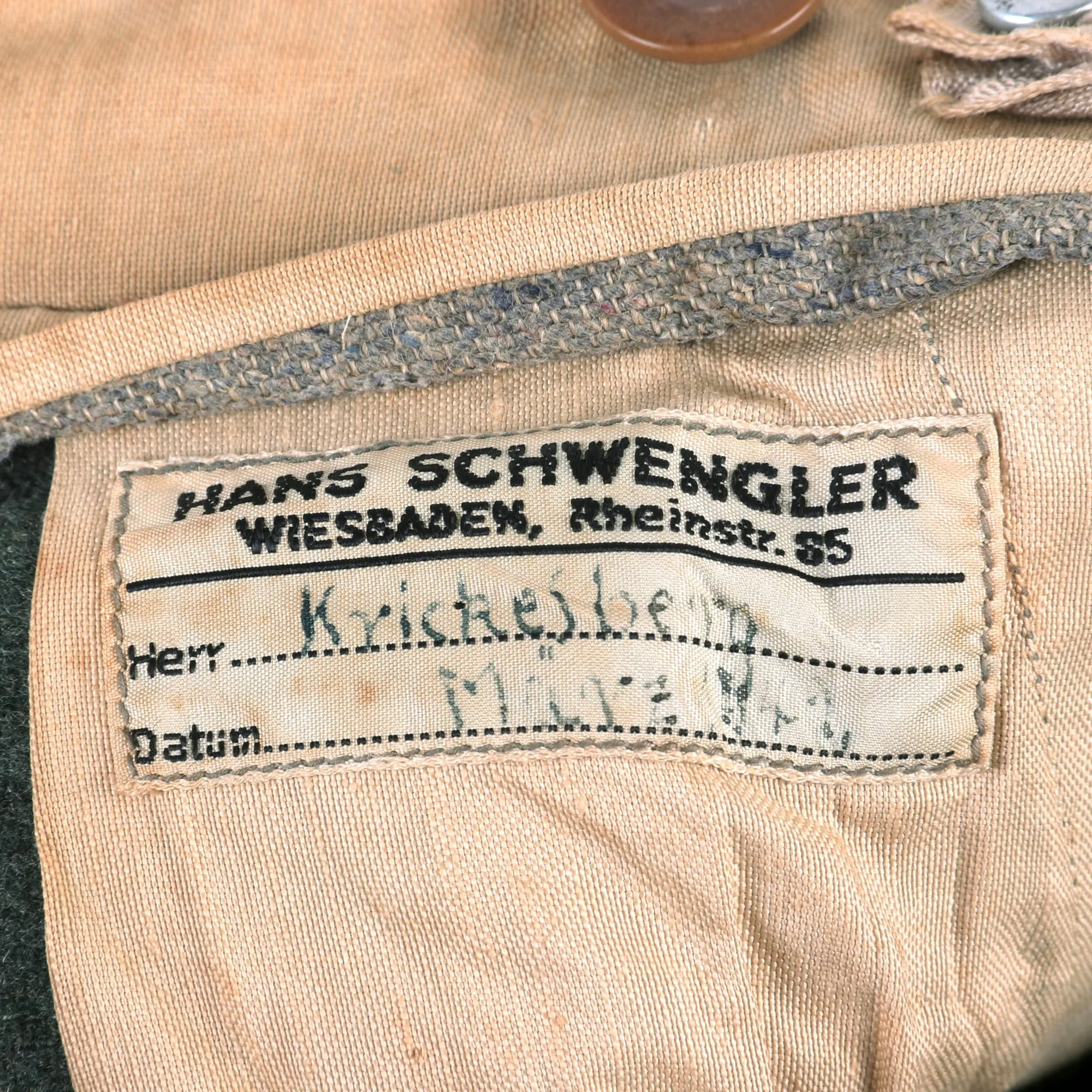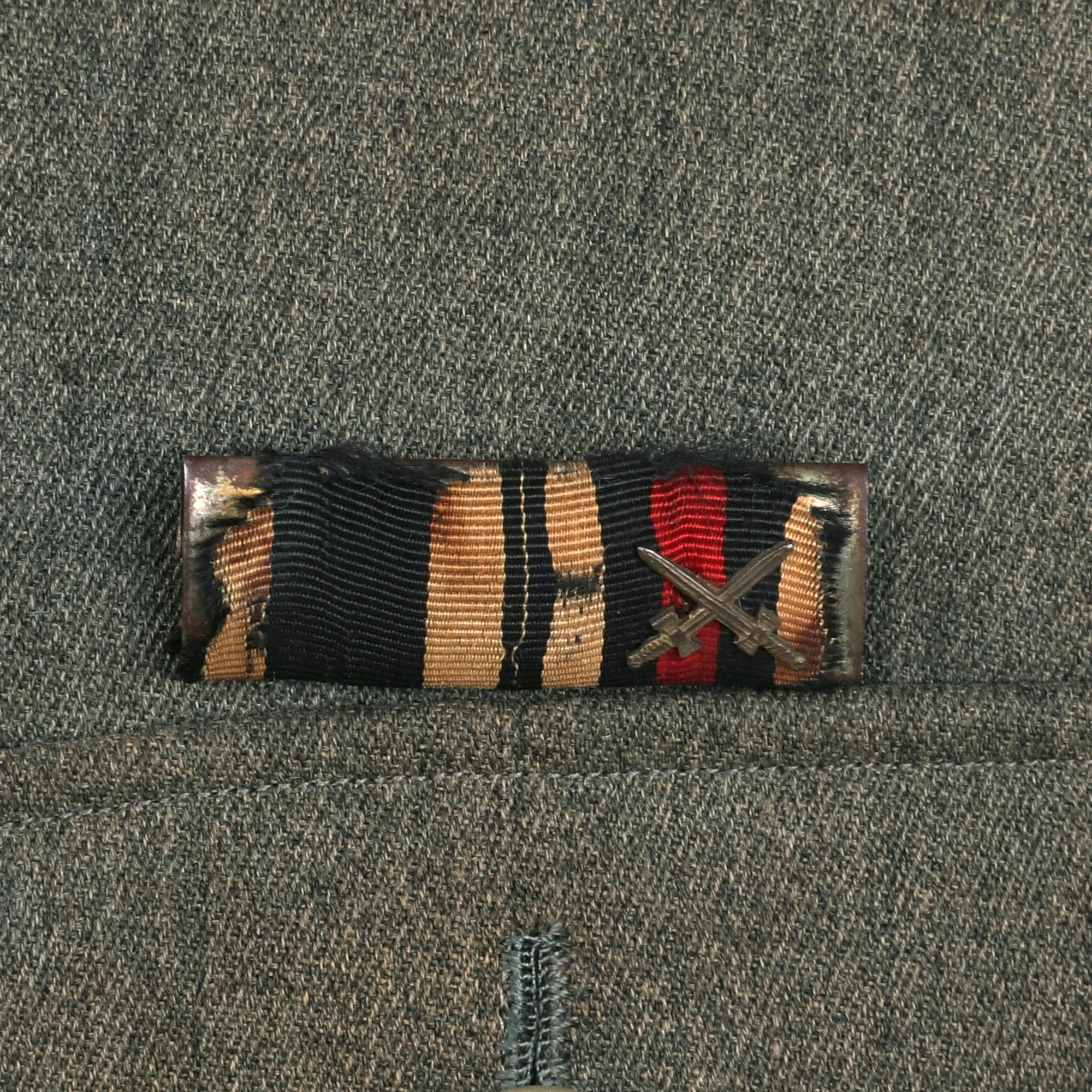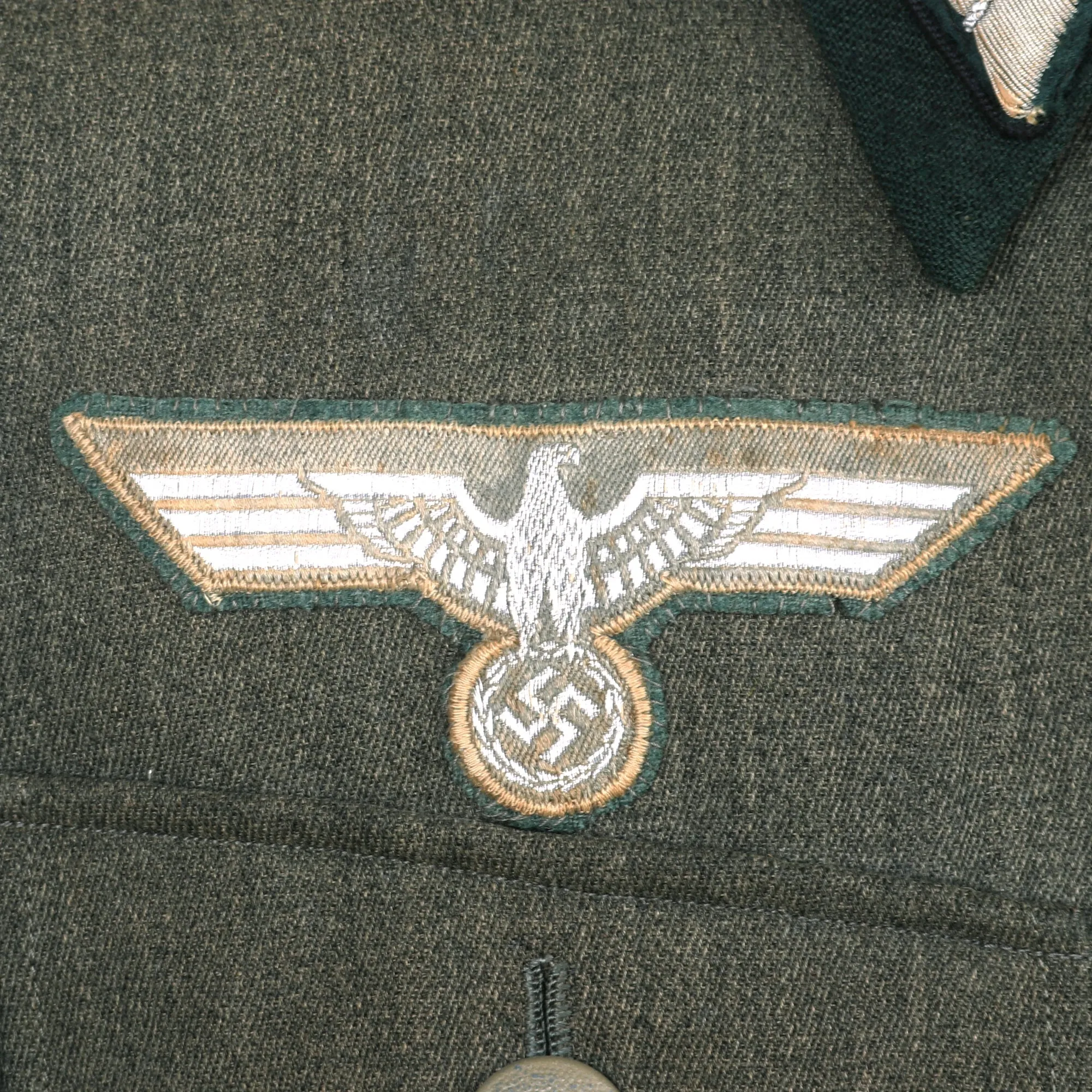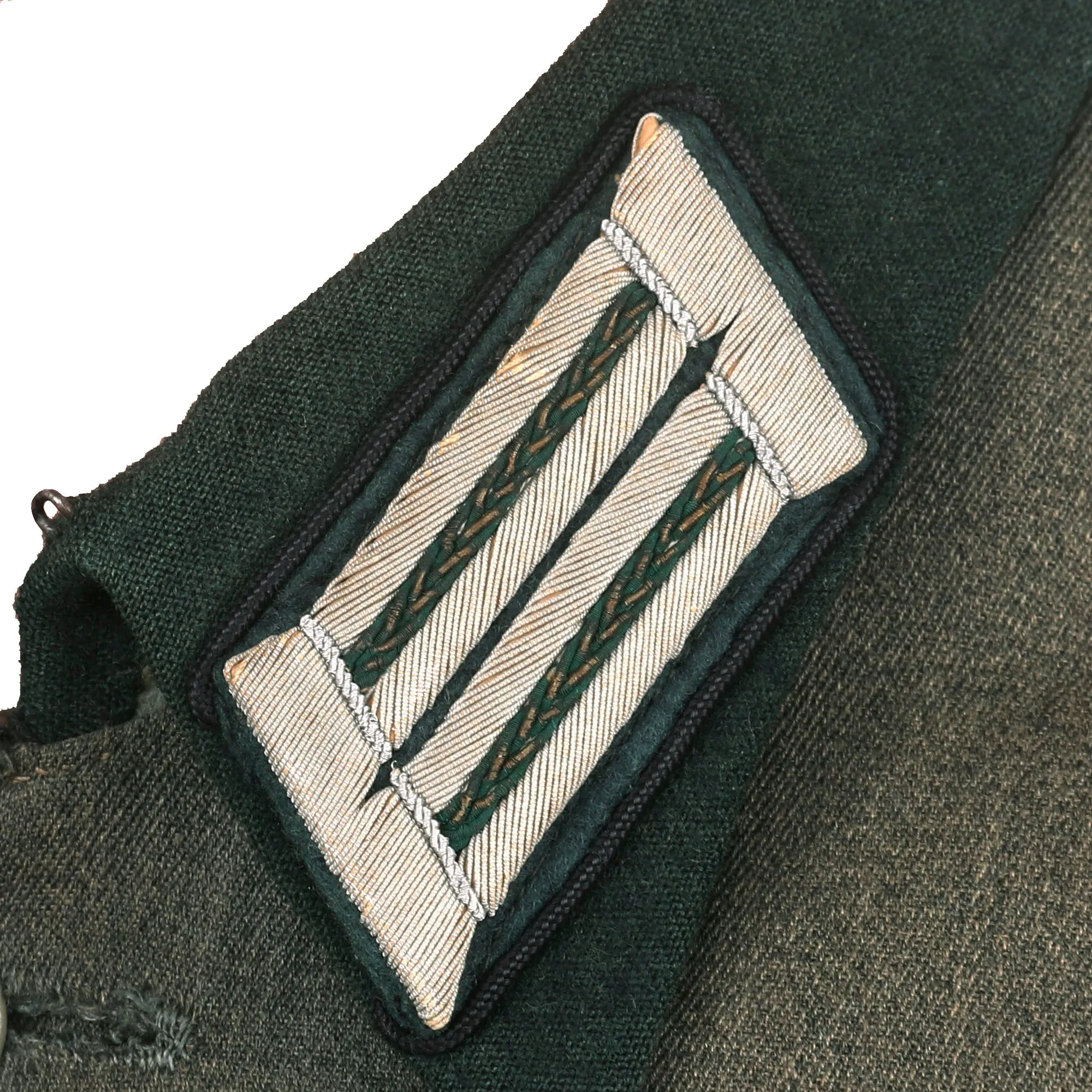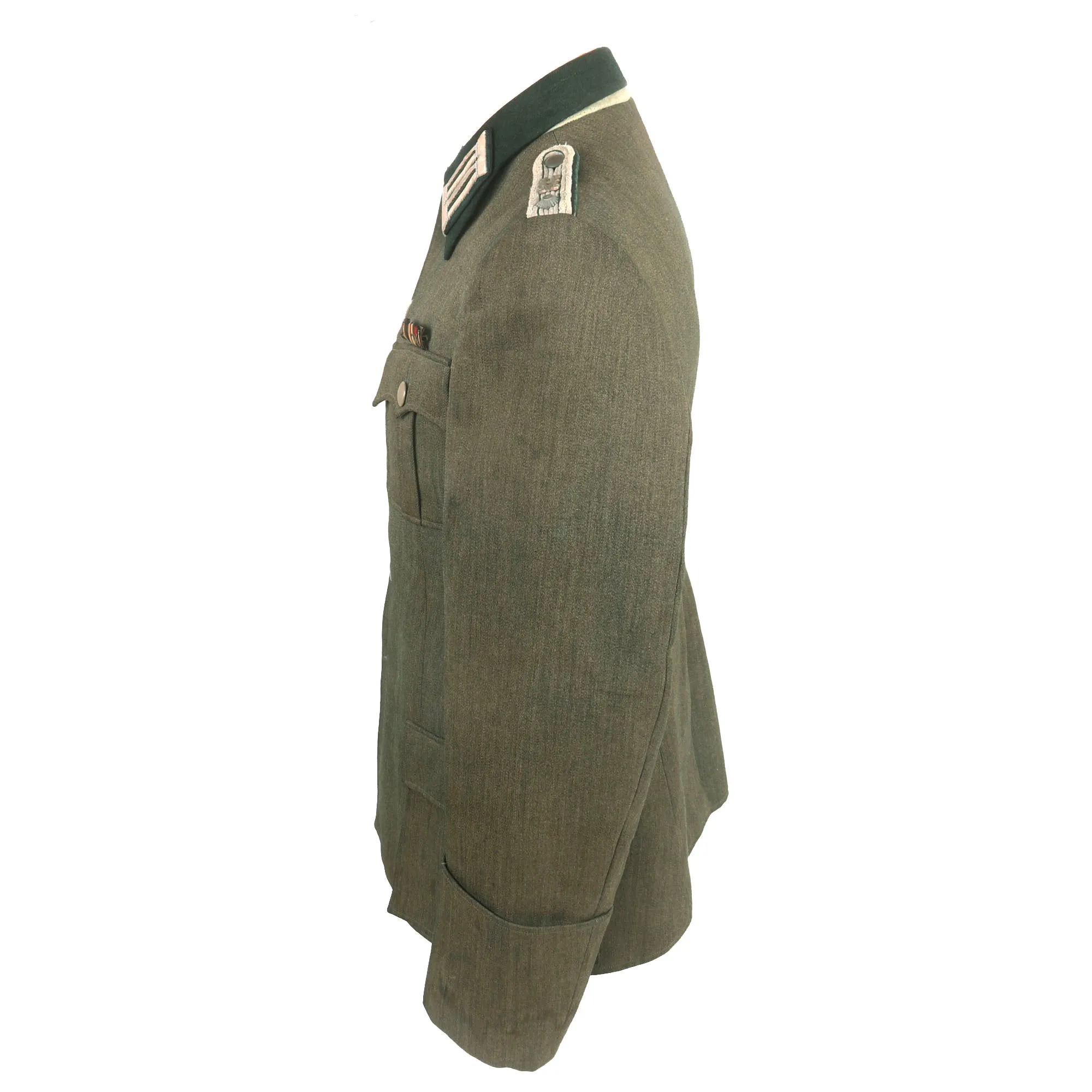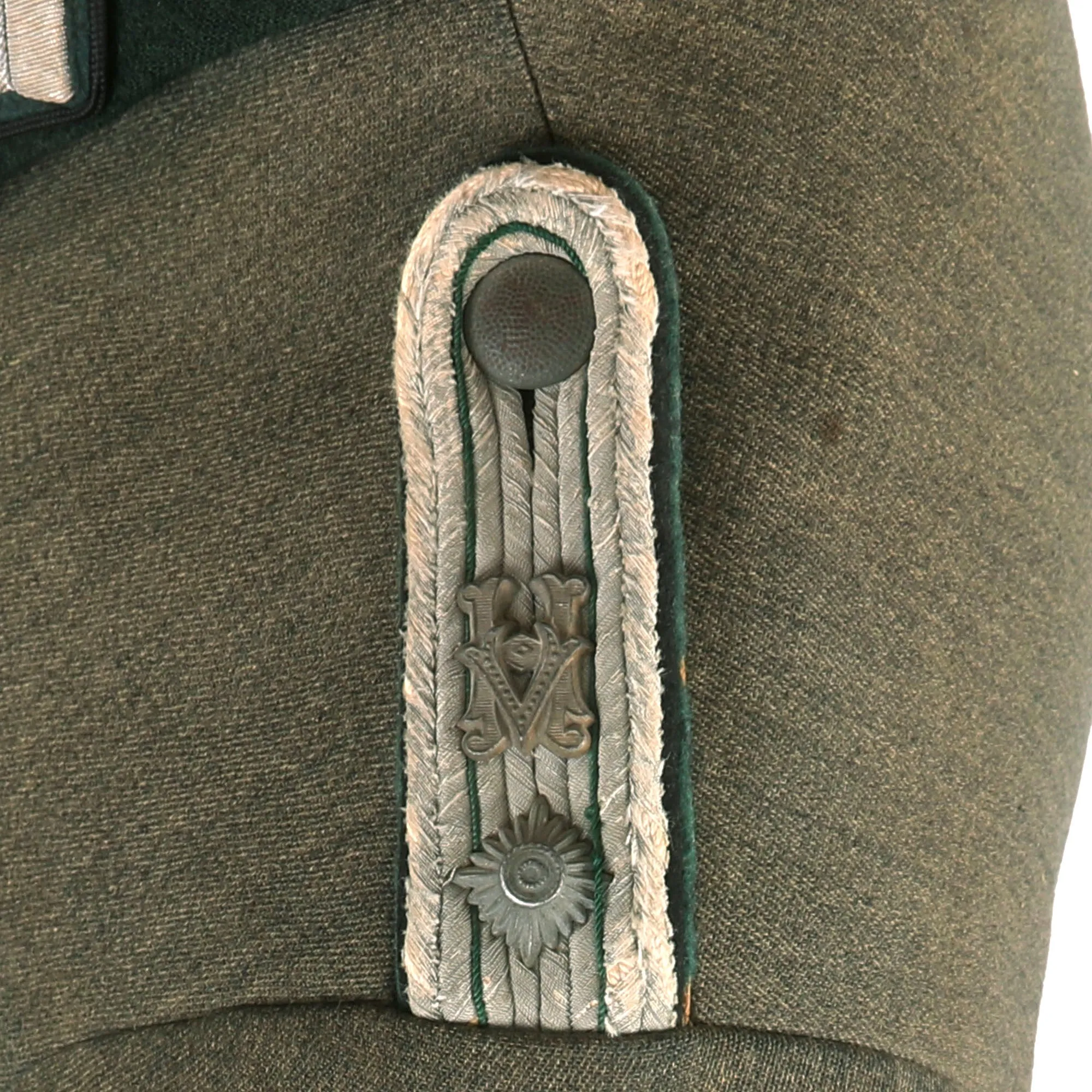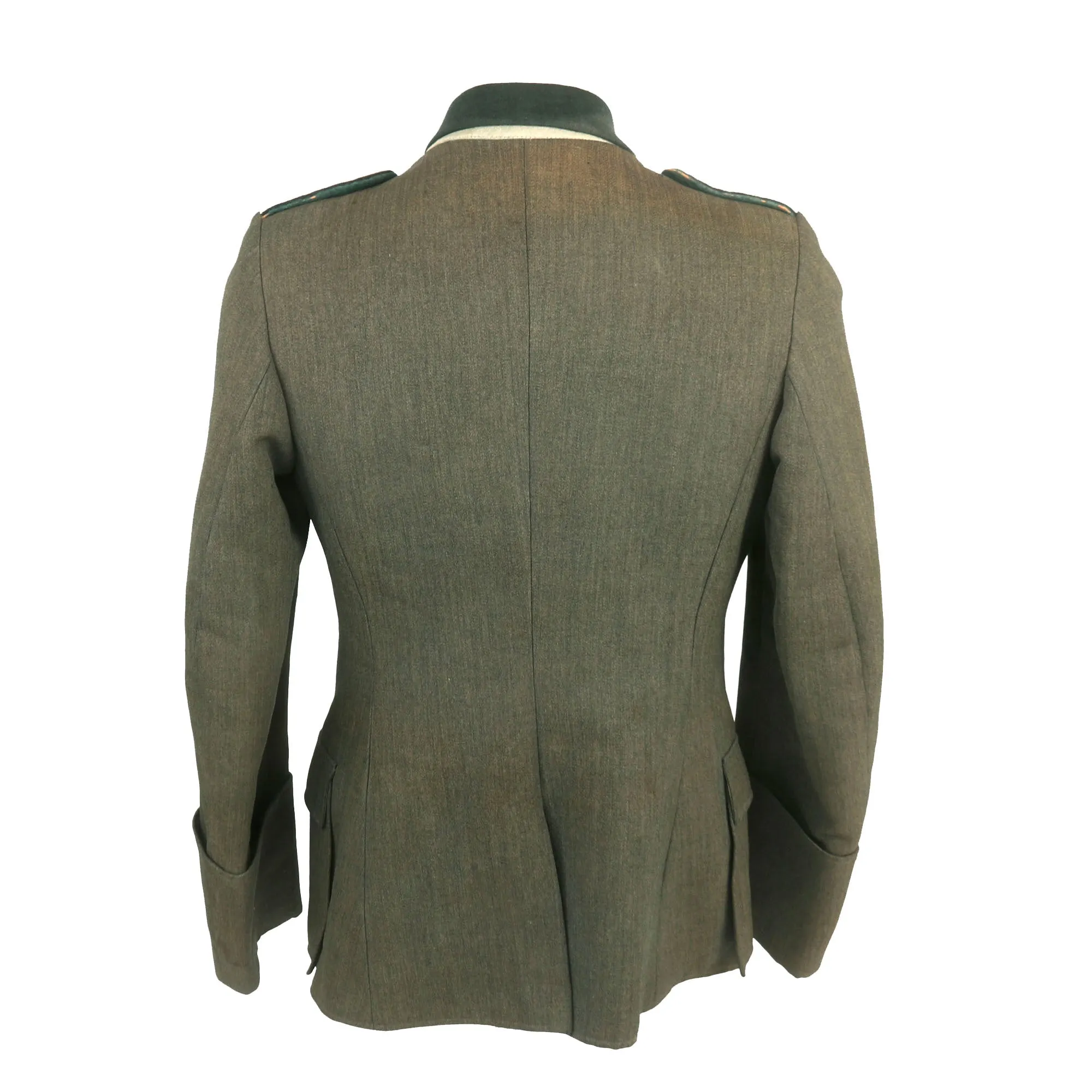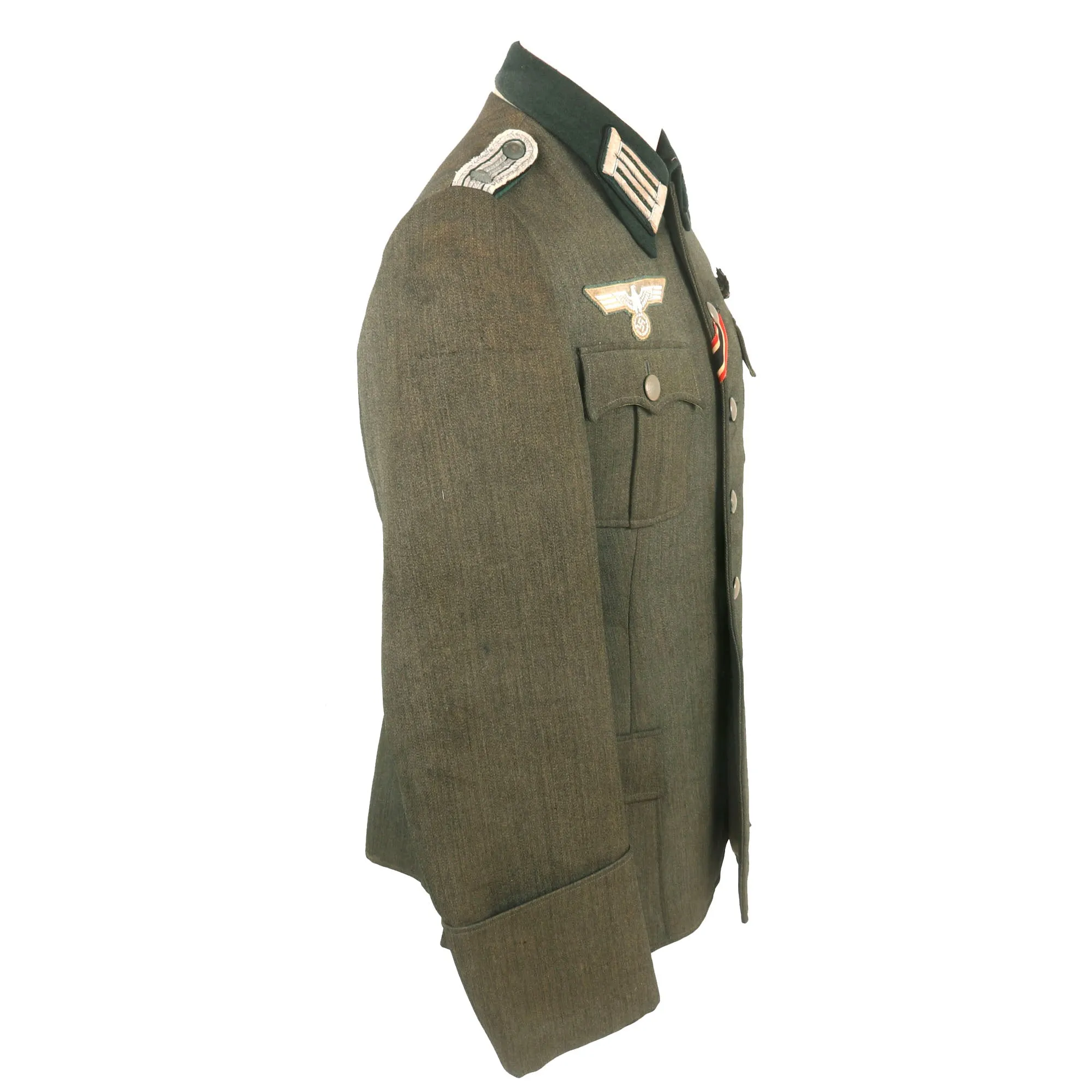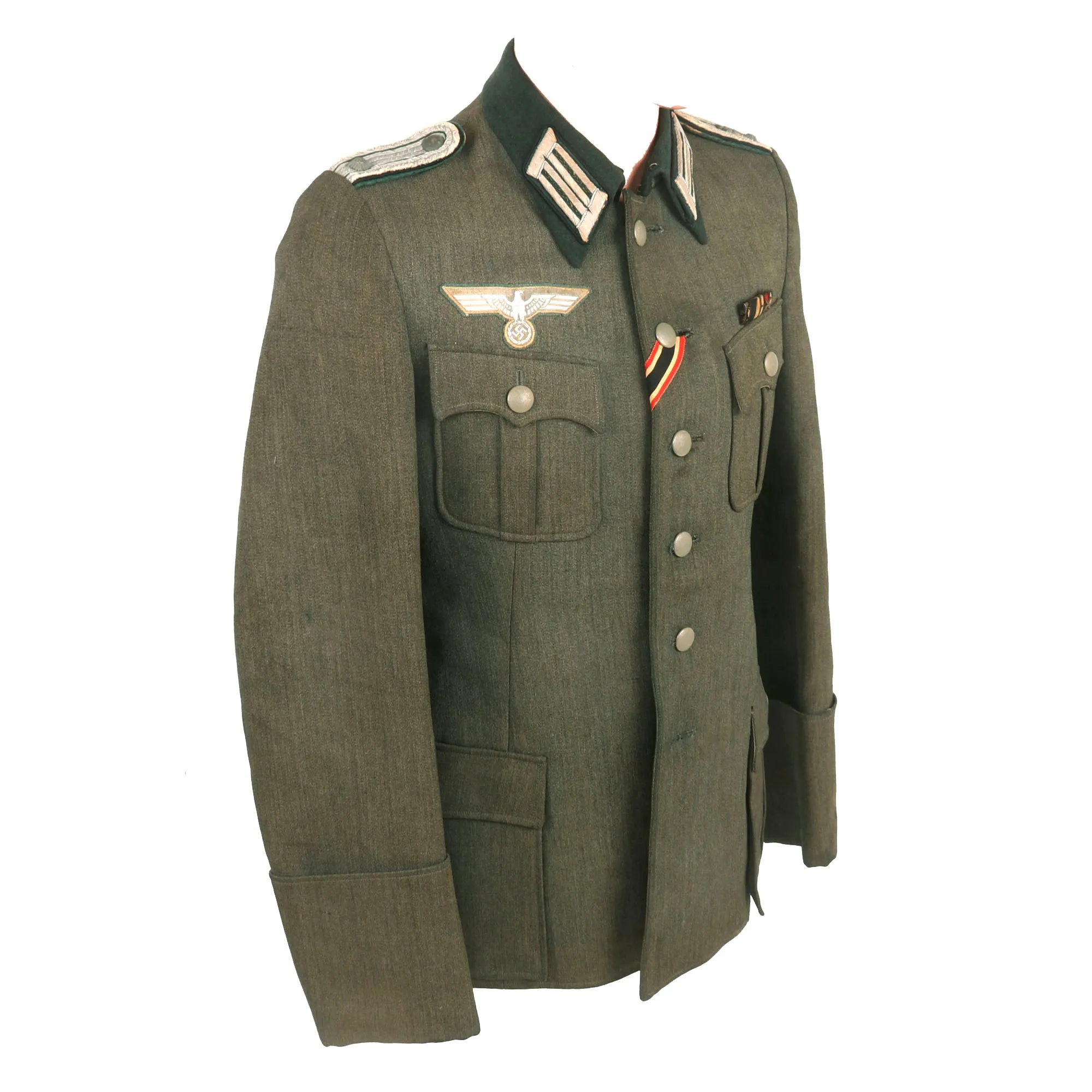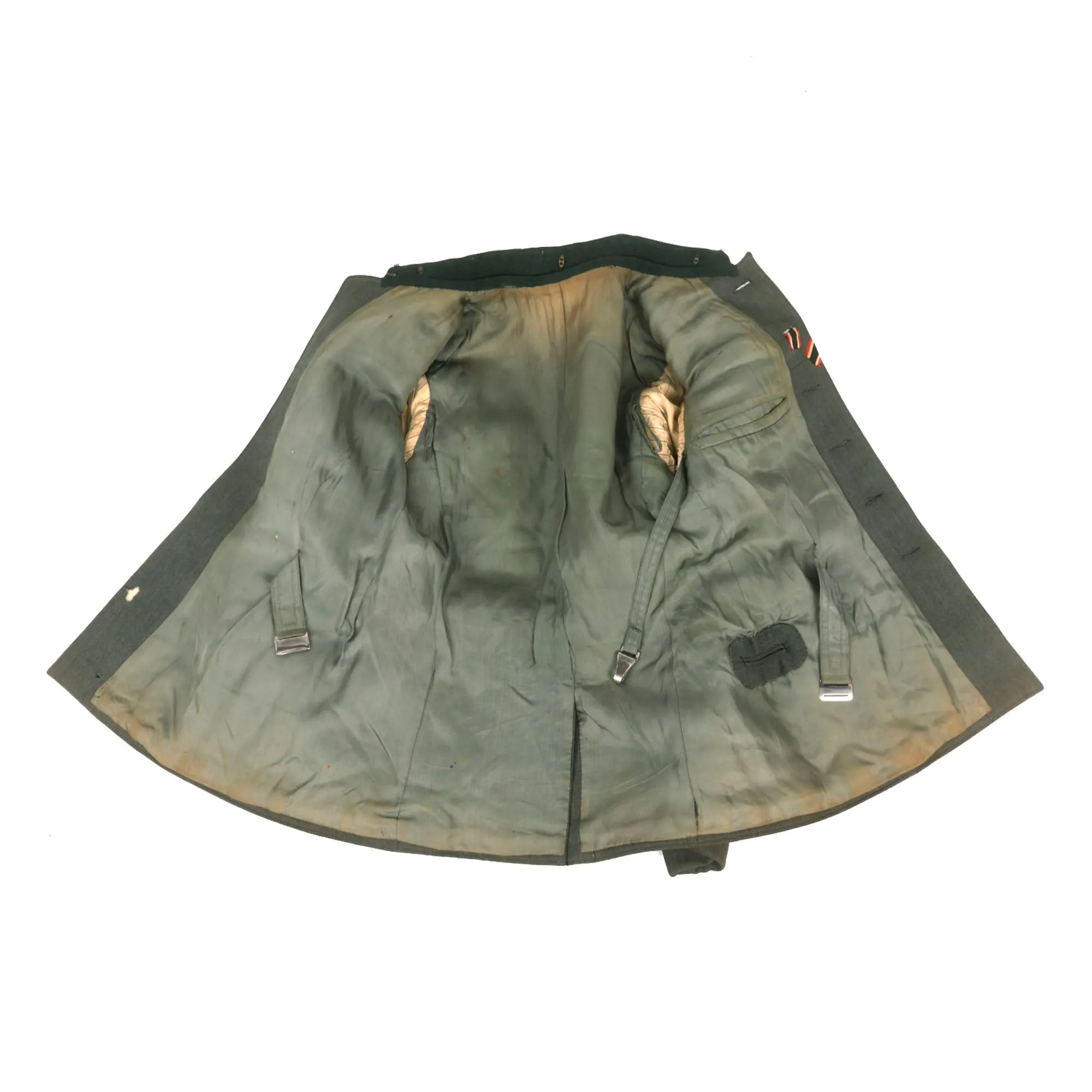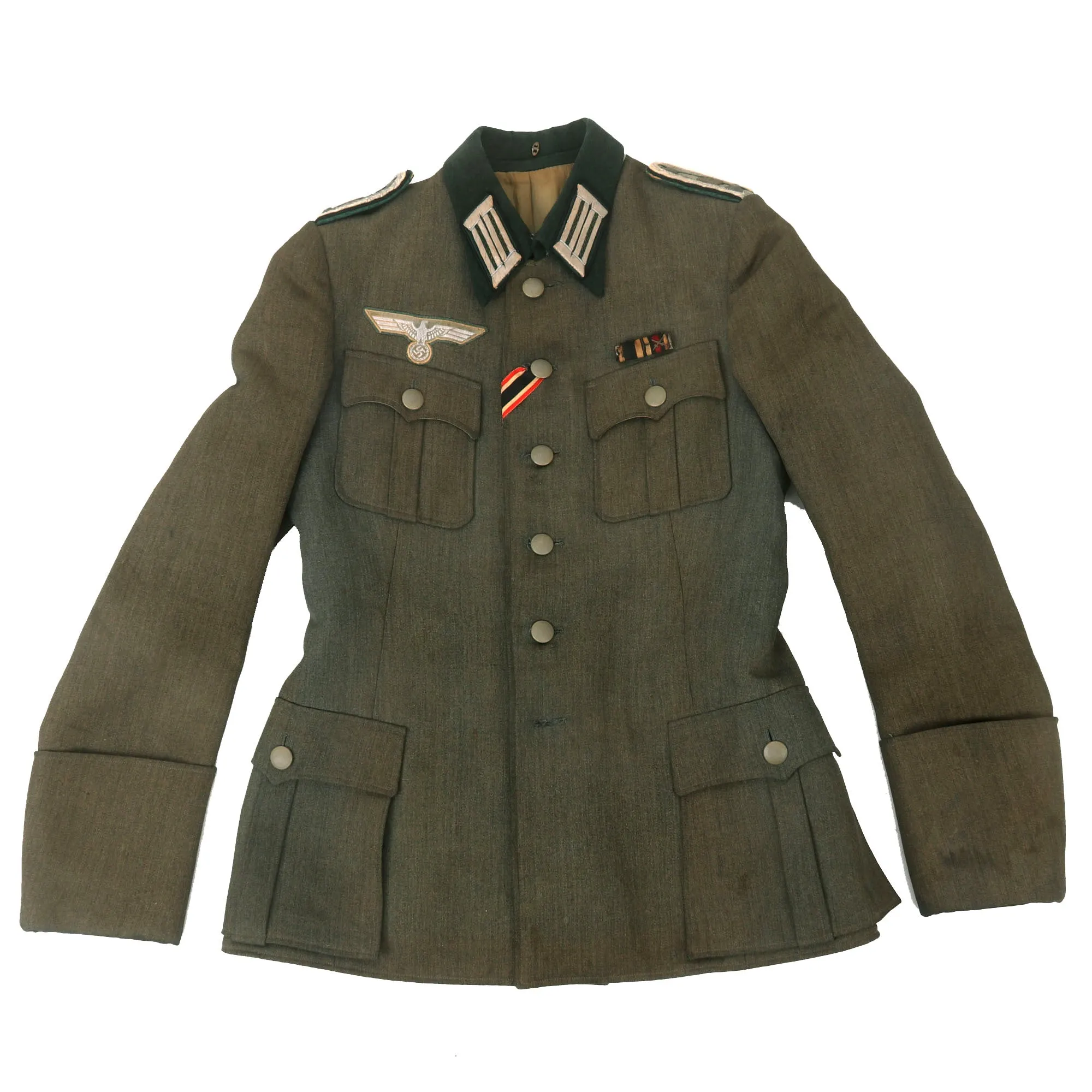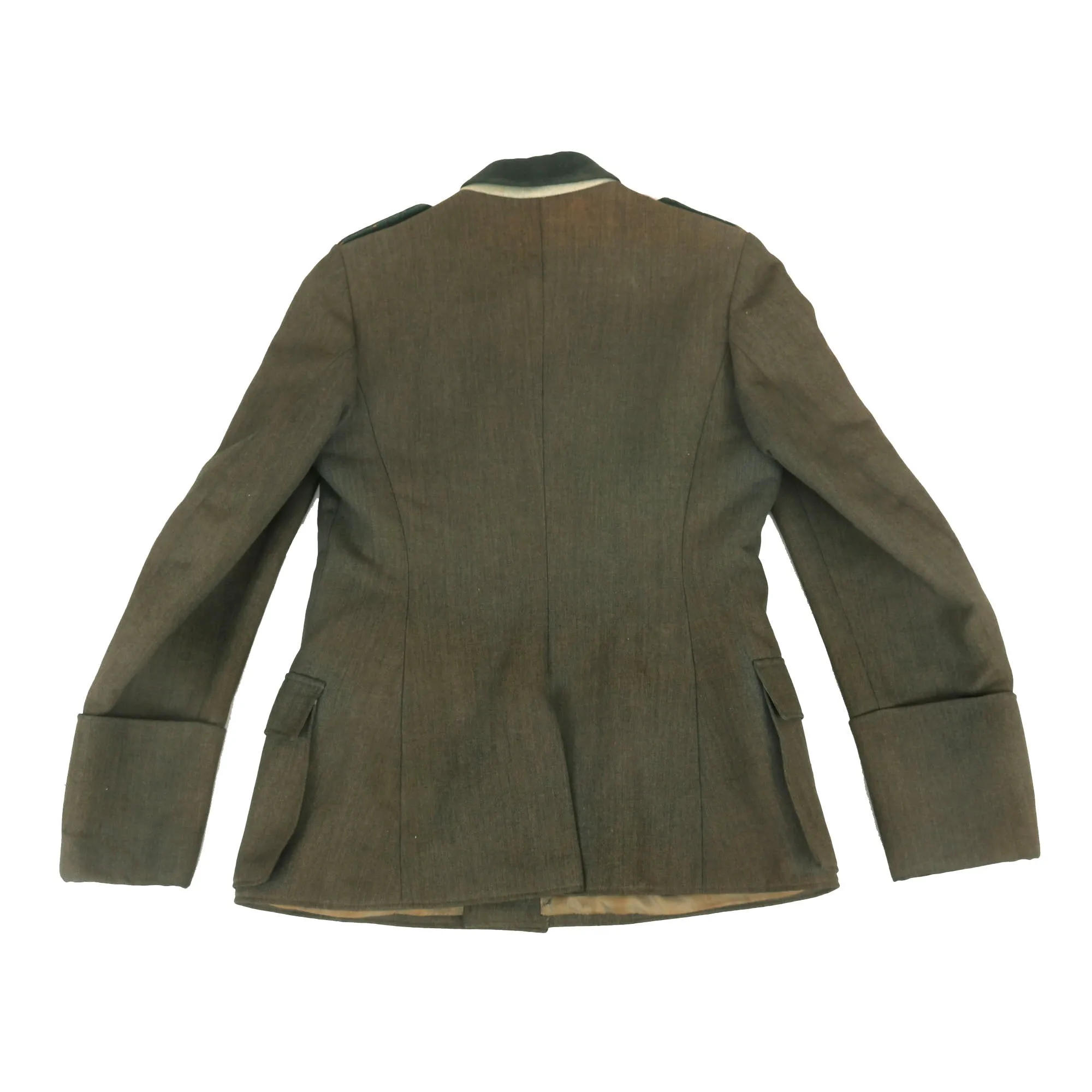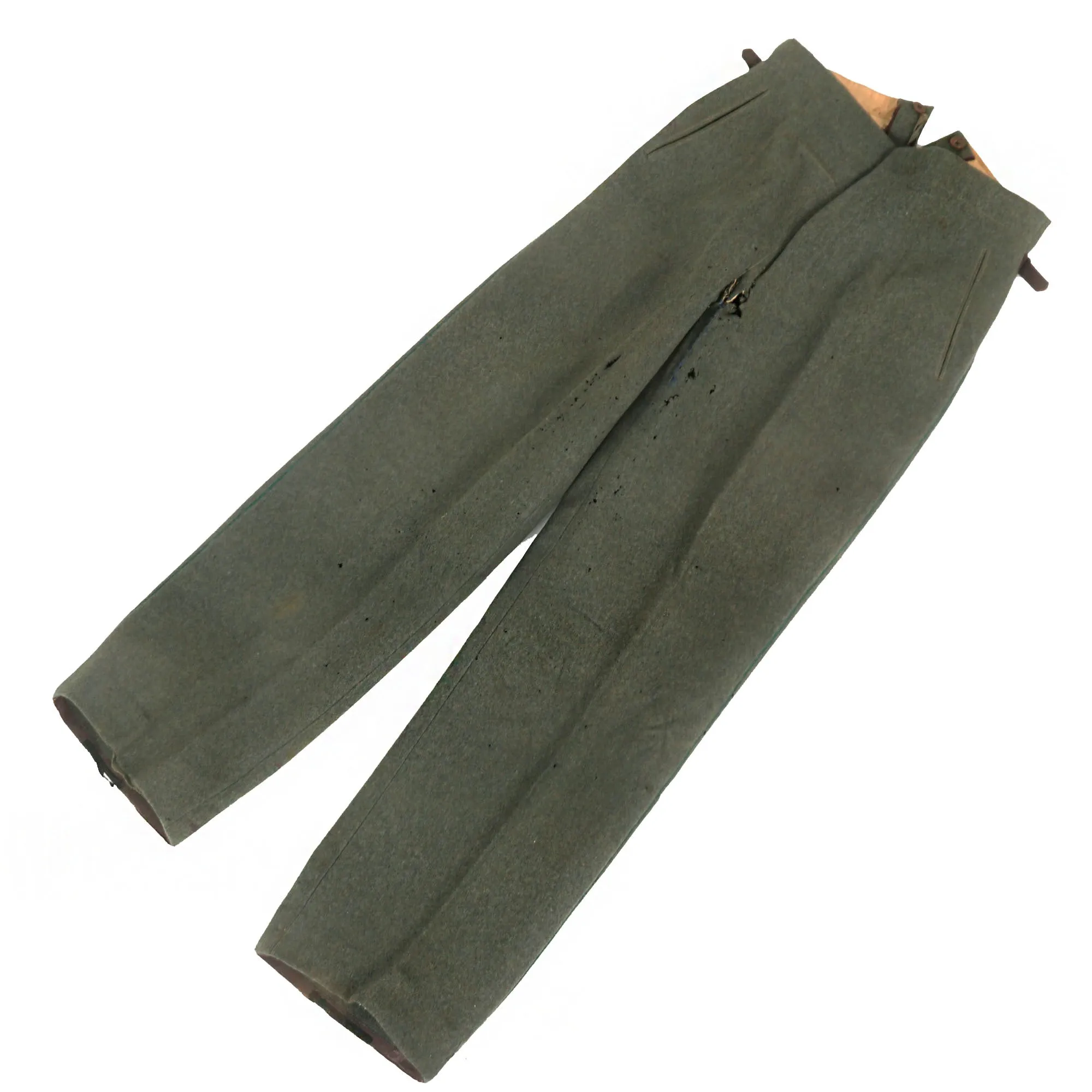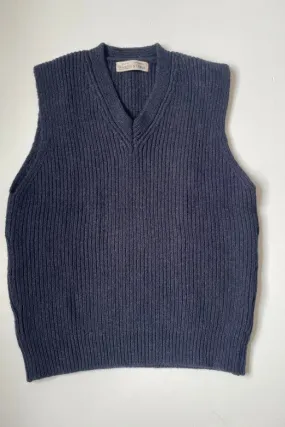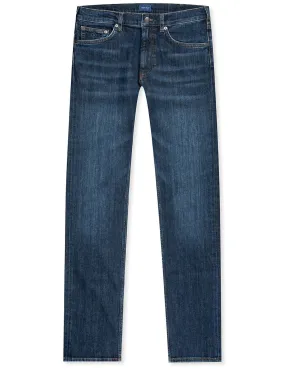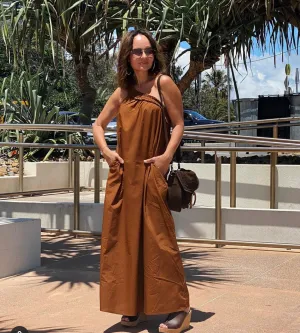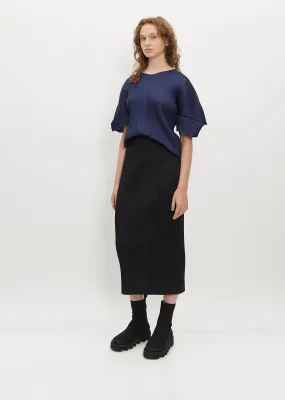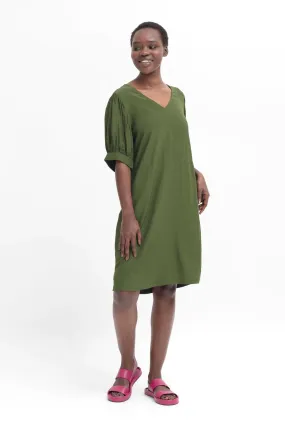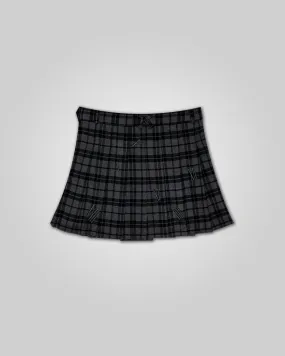Original Item: Only One Available. This is a very nice early pattern German WWII Heeresverwaltung Army Technical Services Administration M-36 Dienstrock (Service Tunic) & Trousers, showing moderate wear from service and in very good display condition. The tunic features four pockets with scalloped flaps and green painted pebbled aluminum buttons, and has a six button front closure, with two "hook and loop" fasteners for the collar. The buttons on the tunic are sewn directly to the fabric, not attached with metal circlips, and all show wear, as they were most likely originally painted.
It is adorned with the usual rank and branch insignia used on German Army tunics. The attractive Army breast eagle appears to have faded heavily, but is the correct officer's silver bullion BeVO embroidered type on a green background, and is very neatly hand stitched to the chest in a fashion typical of wartime German tailor work. It is only stitched to the outer layer of fabric, indicating installation when the uniform was made, so it has never been replaced. On the opposite breast is a two-place ribbon bar with the 1914 Iron Cross, 2nd Class, and the 1914-1918 Honor Cross with Swords, indicating that this soldier saw past service during World War I. There is a 1939 Iron Cross ribbon stitched to the second button hole.
The insignia used by the Heeresverwaltung were for the most part the same as those used by the regular Heer, except that they would have two different Waffenfarbe (corps colors), the Dunkel-grün (Dark Green) of the Army Administration, and then a separate branch color, which linked to what aspect of the army they were worked for. The shoulder boards and litzen collar tabs would both incorporate this aspect.
The collar on this tunic is wrapped in a dark-green wool, has officer's field litzen collar patches on each side, which are woven from silver bullion thread with a Dunkel-grün (Dark Green) background and stripes for the Heeresverwaltung. Surrounding each litzen is a row of Schwarz (black) piping, the Heeresverwaltung Waffenfarbe (Army Administration Corps Color) during WWII for officials of the technical services. This included fortress engineers, geological service, ballistics, testing, and other areas. The collar is in good shape, though there is a bit of wear around the edges, which is usually one of the first places to show damage from use.
The “sew-in” style company officers schulterklappen (shoulder boards) of this tunic are constructed with two rows of fine silver flatware "Russia Braid" double piping, with a thin row of dark green piping between them, all looping around the buttonhole. Under this is the technical services black piping, with more dark green piping underneath. There is a single rank "pip" on each side, as well as a metal HV monogram device for the Heeresverwaltung on one of the two boards. This could mean that the other one simply fell off over time. There is unfortunately not much information out there regarding the rank structure of the Army Administration, so we do not know what "title" the rank insignia indicate.
The included trousers are in similar condition and have a nametag on the interior, with the soldier’s name reading as Krickenberg or Krickesberg, with a date of March 1941. There is also green piping which does match the uniform. A great opportunity for research, as the wear on the tunic and trousers appear the same. There is extensive mothing on the pants especially on the crotch/inseam area, with some non-period repairs. A nice addition.
Overall condition is very good, with some mothing in places, more heavily on the trousers. The jacket fared much better and is perfect for display, as well as some further research with the name in the trousers.
I lovely Germany Army administration uniform set, ready to research and display!
Terms such as M40 and M43 were never designated by the Wehrmacht, but are names given to the different versions of the Model 1936 field tunic by modern collectors, to discern between variations, as the M36 was steadily simplified and tweaked due to production time problems and combat experience.
Field Tunic (Feldbluse) Model 1936
When the NSDAP came to power in early 1933 the Reichswehr, the armed forces of the Weimar Republic, were near the end of a two-year project to redesign the Army Feldbluse (field-blouse). Beginning in that year the new tunic was issued to the Reichsheer and then the rapidly growing Wehrmacht Heer, although minor design changes continued to be made until the appearance of the standardized Heeres Dienstanzug Modell 1936. The M36 tunic still retained the traditional Imperial and Reichswehr uniform color of grey-green "field gray" (feldgrau) wool, but incorporated four front patch pockets with scalloped flaps and pleats (on Reichswehr tunics the lower pockets were internal and angled). The front was closed with five buttons rather than the previous eight, and the collar and shoulder straps were of a dark bottle-green instead of the Reichswehr grey. Compared to the Weimar-era uniforms the skirt of the feldbluse was shorter and the tailoring was more form-fitting due to Germany's adoption of mechanized warfare: soldiers now spent much time in the confined space of a vehicle and a shorter jacket was less likely to pick up dirt from the seats. It also included an internal suspension system, whereby a soldier could hang an equipment belt on a series of hooks outside of the tunic. These hooks were connected to two straps inside the lining, which spread the weight of equipment without having to use external equipment suspenders. The M36 was produced and issued until the very end of the war, though successive patterns became predominant.
SS field uniforms were of similar appearance externally but to fit their larger patches had a wider, feldgrau collar, and the lower pockets were of an angled slash type similar to the black or grey SS service-dress. The second button of an SS Feldbluse was positioned somewhat lower, so that it could be worn open-collar with a necktie. Due to supply problems the SS were often issued army uniforms.




